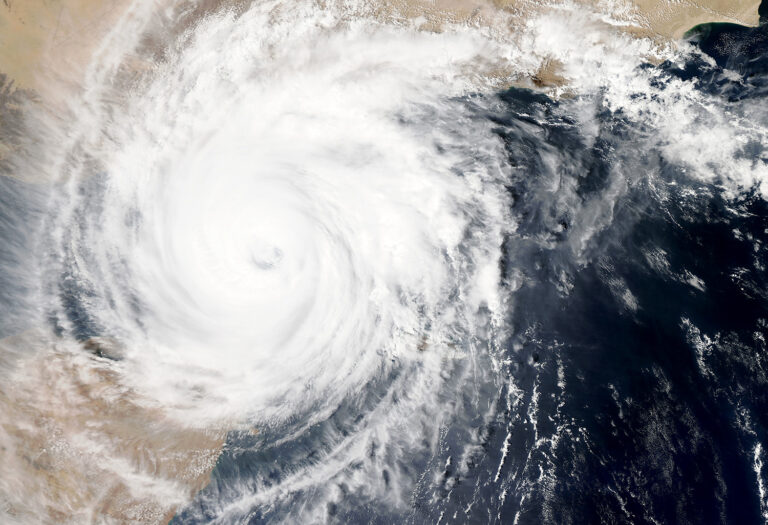
Hurricane season begins this June and lasts until November, mainly affecting home and business owners on the East Coast and Gulf Coast of the United States. However, due to their often times massive size and severity, high winds and rain can cross over into other states that do not border the coasts.
Also, due to their unpredictability, it’s difficult for meteorologists to correctly pinpoint where they will have the most damaging impact. Preparing a plan to protect your family, your home, and your business is important in the event that a storm is headed your way.

Go over your insurance policy
Make sure you fully understand what your homeowners policy covers, and particularly what it might not cover before you file a claim. Most insurance policies include exclusions, but you can most likely purchase additional endorsements or separate policies to get extra coverages. Now would be a good time to call your insurance agent or company to review your policy. If you discover you do need additional coverage, you’ll not have the time to request quotes to get the additional coverage you might need.

Seal and secure your roof
One of the most common types of storm damage from hurricanes is roof damage. After a storm, you might discover missing or cracked shingles, leaks inside the home, or even a sagging roof.
Before hurricane season starts, it’s a good practice to have your roof inspected, as water can damage the entire structure of your roof, leading to leaks or roof collapse. Other things to look out for:
- Inspect the gable bracing inside your attic and replace any loose or missing braces
- Look for any cracks or other areas of the roof and seal them off
- Replace, caulk or nail any loose shingles

Protect your windows and doors
Windows and doors are the most susceptible areas of your home due to the high winds of a hurricane. Broken tree limbs and patio furniture are some of the most common causes of damage to doors and windows during a storm.
One of the best things to have done to your home before hurricane season hits is to install storm shutters. If, however, storm shutters are outside of your budget, attaching sheets of plywood over doors and windows before a hurricane hits could help seal these at-risk areas of your home.

Tie down outdoor furniture or structures or bring them inside
Due to the high winds that a hurricane can deliver, bring inside any patio furniture, potted plants and grills that could easily become projectiles. Also make sure any carports or tool sheds are well-anchored tot he ground.

Prepare your emergency kit
Other than the actual storm itself, a hurricane can often have other lasting effects. For example, in October of 2018, Hurricane Michael left six states with 1.7 million electricity outages, some lasting for more than a week.
A typical emergency kit should include items such as:
- Radio
- Flashlights
- Batteries
- Fully charged cell phones with a back-up battery
- Tools
- Fire extinguisher
- Matches or lighter in a sealed waterproof bag
- Important documents in a sealed waterproof bag
- Cash
- First aid items
- Prescription medications
- Mosquito repellent
- Water
- Non-perishable food
- Pet food
Another thing to keep in mind is how you can prepare meals in the event of electricity of gas service for several days.

Have an evacuation plan
You might find that you’ll need to evacuate your home if local authorities are advising it. Determine where you will go, what you’ll bring with you, how you’ll get there, and how to keep your loved ones safe.
It’s always better to have an evacuation plan and not need it that to not have one if you need it, so prepare ahead. Don’t forget to include any pets as well; if your home is not safe for you, it’s most likely not safe for them, either.

Consider purchasing flood insurance
Generally, flooding is not covered in a standard homeowners insurance policy. If you live in an area that’s susceptible to flooding, flood insurance is a smart choice. Depending on the state, flood insurance runs on average $600 to $1,600 per year.

Hurricane safety tips
Before hurricane season begins, carefully inspect your entire home. Look for any holes, gaps or other openings and fill them in. Tighten any screws and replace damaged brackets or braces. You can always call in a licensed contractor if you’re not sure what to look for.
Other things to consider:
- For mobile homes, always be prepared to evacuate. Even if your manufactured home is constructed to withstand high wind speeds, most officials recommend evacuating.
- Be prepared for high-rise pressure changes. If you live in a high-rise building, keep in mind that wind pressure increases with height.
- Before hurricane season hits, trim back any trees and remove the old branches. These old branches could very well become projectiles during a storm.
- Consider investing in a portable generator in the event that your power goes out. This can easily provide enough power for a refrigerator, operate fans, or to simply charge devices such as cell phones.
The most important aspect of preparing for hurricane season is proving yourself enough time in advance. Knowing how to protect your loved ones and your home is essential in the planning process.


